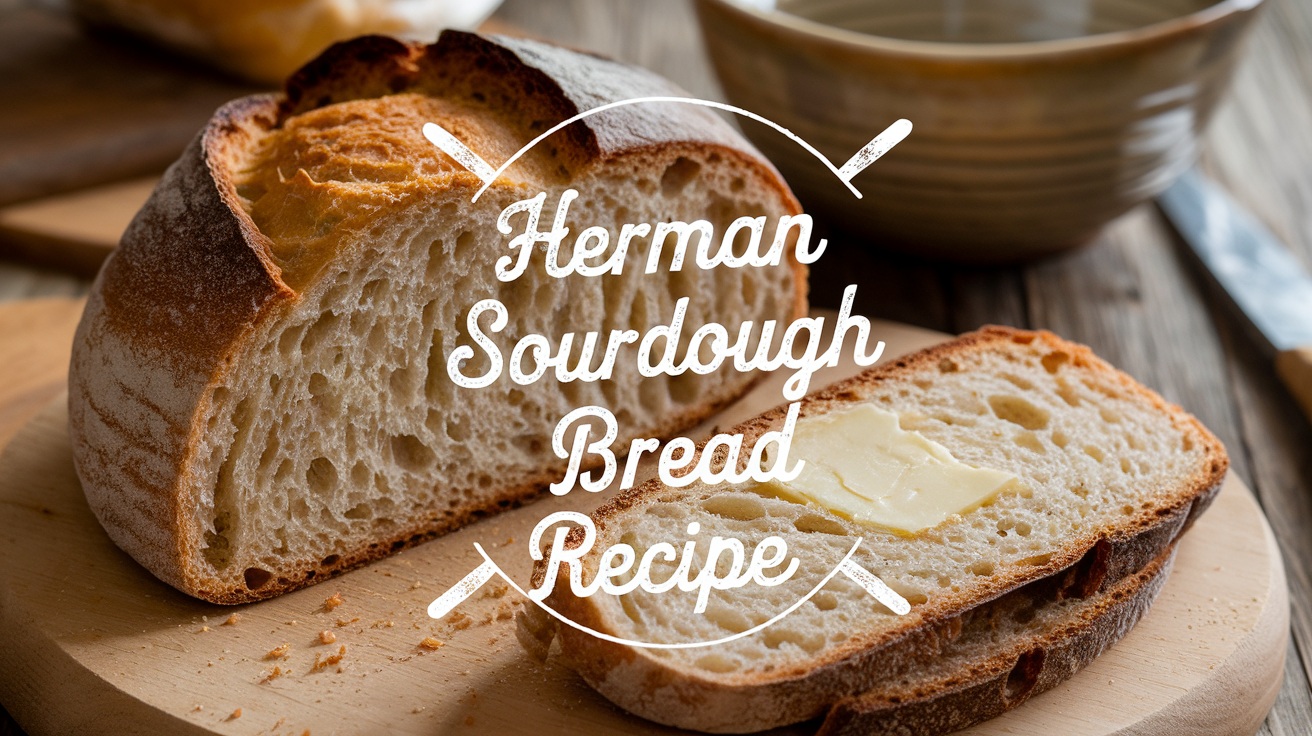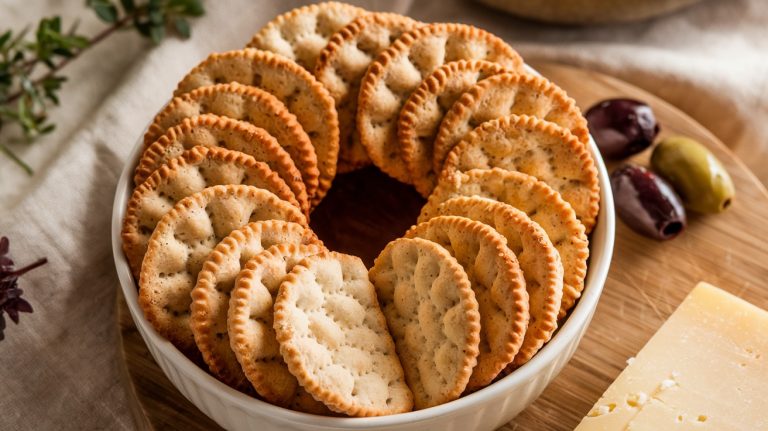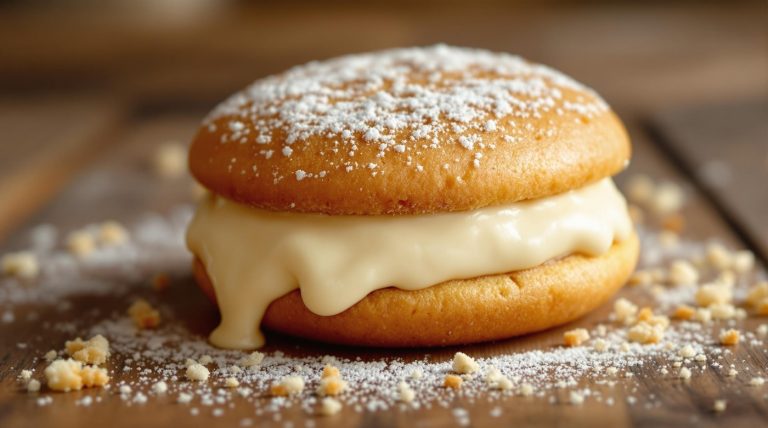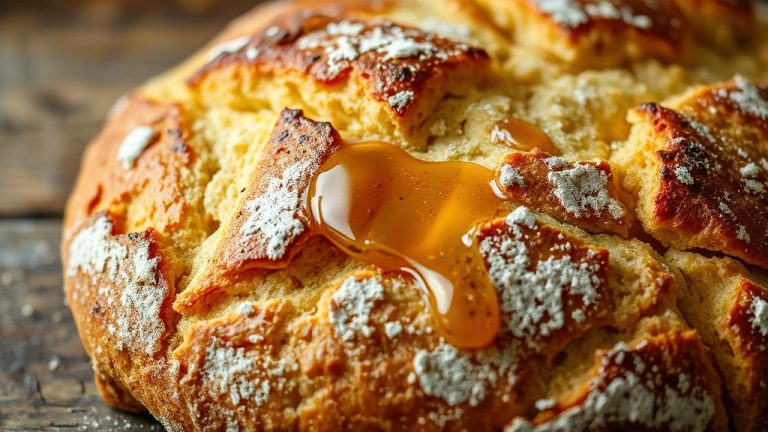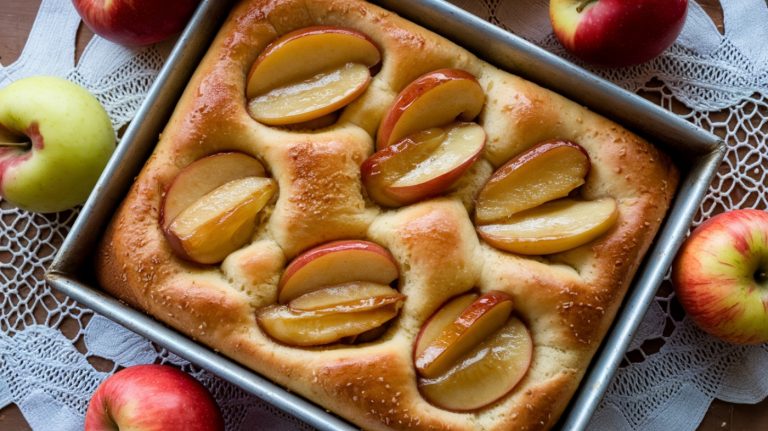Herman Sourdough Bread Recipes: Tangy, Fluffy and Timeless
Herman sourdough bread recipes let you create delicious, tangy loaves that burst with flavor. To start, you’ll need the Herman starter, flour, yeast, and a few other ingredients.
The process involves mixing, kneading, and allowing the dough to rise, creating that perfect texture. Bake it at 375°F for 30-35 minutes until it turns a gorgeous golden brown.
To personalize your bread, you can even experiment with ingredients like cheddar cheese or spices. Each recipe brings back the joy of sharing and tradition, reminding us of cozy family gatherings and culinary heritage. There’s so much more to discover.
Key Takeaways
- Use Herman starter as the base for various recipes, including Herman Milk Bread and Sourdough Pancakes for a unique flavor profile.
- Combine activated yeast, flour, salt, and Herman starter to create a versatile dough for shaping into loaves or rolls.
- Experiment with additional ingredients like cheddar cheese or spices to enhance the flavor of your Herman bread recipes.
- Follow a consistent feeding schedule for your Herman starter to ensure optimal rise and flavor in your baked goods.
- Utilize leftover starter creatively, such as making Cinnamon Rolls or Flatbreads for diverse meals.
Overview and Historical Significance of Herman Sourdough
Herman sourdough is both a flavorful baking tradition and a symbol of connection, rooted in the art of nurturing a living starter. Originating in the 1970s and 1980s, it embodies the spirit of community, with families and friends sharing the starter and recipes like pancakes, coffee cakes, and bread.
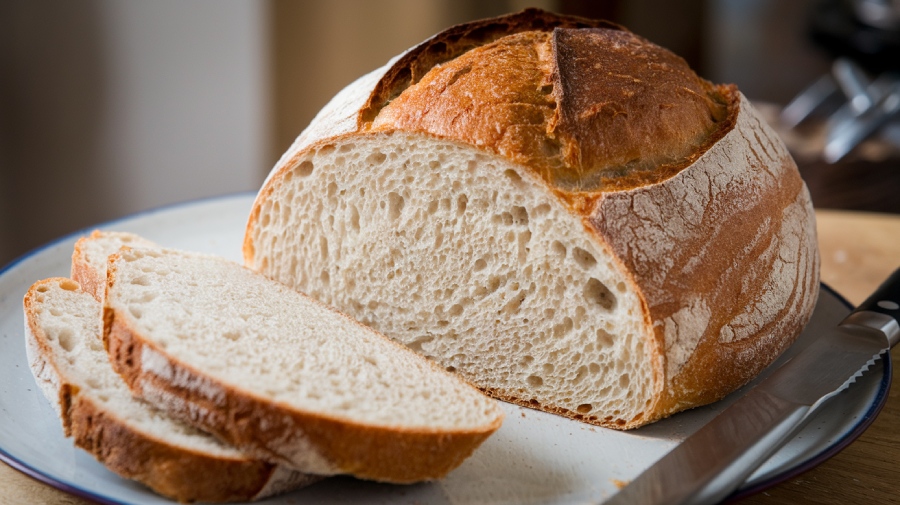
The Herman starter—a blend of flour, sugar, and milk—requires about 15 days of care to mature into a bubbling powerhouse. Once ready, it transforms dough into golden, flavorful baked goods. This process not only creates delicious bread but also preserves cultural heritage, passing down baking traditions that strengthen bonds across generations.
Ingredients for the Recipe
Gathering the right ingredients is essential when you’re ready to create your delicious Herman Bread. The unique blend of flavors and textures starts with the perfect components. Here’s what you’ll need to get started:
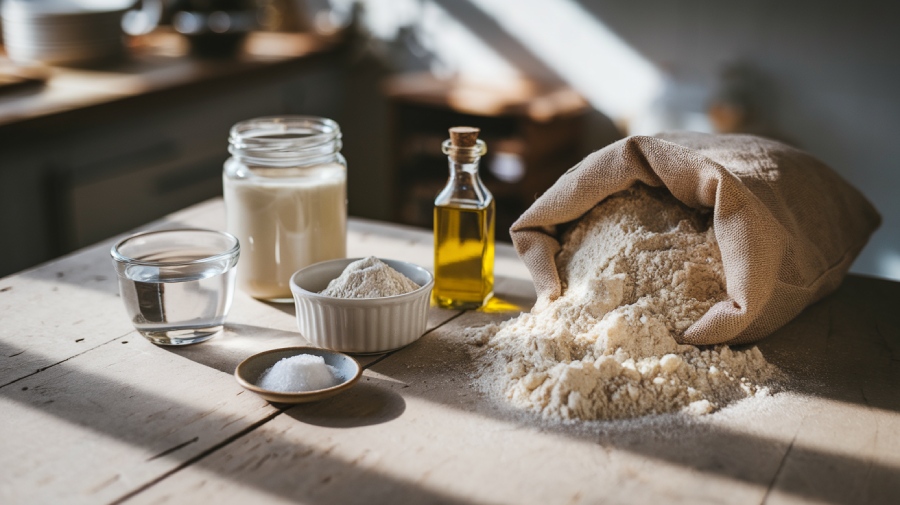
- Herman Starter: This is the heart of your bread, providing a rich, tangy flavor that can be enhanced through proper starter maintenance.
- Yeast and Warm Water: To activate the leavening process, you’ll need one package of dry yeast dissolved in warm water.
- Flour, Oil, and Salt: Your dough will consist of about 4-5 cups of flour, 1-2 tablespoons of oil for moisture and flavor, and a dash of salt to enhance the taste.
Once you have these ingredients, you’ll be well on your way to creating a delectable loaf. The blend of the Herman Starter with yeast and warm water creates a living culture, while the flour forms the structure of your dough.
Step-by-Step Preparation
With your ingredients ready, it’s time to bring your Herman Bread to life through a straightforward step-by-step process. Start by dissolving the yeast in warm water for about 10 minutes until it becomes creamy. Then, mix this with your Herman Starter, oil, flour, and salt in a large bowl to form your dough. For a successful rise, verify your Herman Starter is bubbly and active, as this will enhance the flavor and texture of your loaf.
Next, knead the dough on a floured surface for about 8 minutes. You want it to be smooth and elastic, which is essential for a good rise.
Once you’ve kneaded the dough, place it in an oiled bowl and cover it with a damp cloth. Let it rise for an hour, giving the yeast time to work its magic and expand the dough.
After the first rise, shape the dough into a loaf and transfer it to a greased pan. Allow it to rise again for an additional 40 minutes.
Meanwhile, preheat your oven to 375°F (190°C). Finally, bake your loaf for 30-35 minutes until it’s golden brown. Tap the bottom—if it sounds hollow, your sourdough is ready.
Baking Tips and Techniques
Having the right tools and achieving the perfect dough consistency is essential when baking your Herman sourdough.
Investing in essentials like a Dutch oven is particularly important, as it helps create an ideal environment for crust development and moisture retention, which are key for delicious sourdough.
You’ll also want to have a bench scraper and a kitchen thermometer to help you along the way.
Mastering these techniques will elevate your bread-making game, and enjoy a more rewarding baking experience.
For more insights on selecting the best Dutch ovens for sourdough baking, check out top Dutch ovens.
Essential Baking Tools
Baking bread is an art that requires not just skill but also the right tools to achieve the perfect loaf of Herman sourdough. You’ll find the process smoother and more enjoyable with the right equipment. Here are three essential tools you’ll need:
- Digital Kitchen Scale: Accurate measurements are vital for sourdough starter and flour. A scale guarantees consistency in your recipes, which can greatly impact the sourdough texture and flavor.
- Bench Scraper: This handy tool helps you divide and shape dough efficiently, reducing mess and making it easier to handle your sourdough.
- Dutch Oven: For ideal baking, a Dutch oven creates a steamy environment that enhances oven spring and crust development, giving your bread that professional touch.
Don’t forget the mixing bowl and a non-reactive utensil to prevent interaction with your sourdough starter.
A thermometer is key to checking the internal temperature; for a perfectly baked loaf, aim for 190°F to 210°F.
Perfecting Dough Consistency
Perfecting dough consistency is vital for creating that ideal loaf of Herman sourdough, and it all starts with the right ingredients and techniques. Choose a high-protein bread flour (13% and above) for optimal gluten development, which is essential for achieving a chewy texture.
As you mix your ingredients, gradually incorporate water, aiming for a hydration ratio of about 70%. For every 500g of flour, you’ll need around 350g of water to achieve a balanced dough. Additionally, incorporating sourdough starter techniques can enhance fermentation and flavor complexity.
Utilize the autolyse technique by mixing flour and water and allowing it to rest for 30 minutes before adding salt. This enhances gluten formation and considerably improves dough elasticity.
Monitor your dough closely during bulk fermentation, aiming for a 3-4 hour period. Employ regular stretch and fold techniques to build strength without over-kneading.
Keep an eye on the dough temperature; it should be around 78°F to 82°F (26°C to 28°C) to maximize fermentation activity. This temperature is vital for ensuring a consistent rise, directly affecting your final bread’s crumb structure.
Nutritional Information
Herman sourdough bread can be a nutritious addition to your diet, especially when enjoyed in moderation. The nutritional values of this bread can vary based on the specific ingredients you choose to include. Generally, a standard serving size provides about 100-120 calories, making it a reasonable option within a balanced diet.
Here are three key points to take into account:
- Macronutrients: Herman’s bread typically contains carbohydrates and protein, thanks to essential ingredients like flour and yeast. The carbohydrate content fuels your energy needs.
- Percent Daily Values: These values are calculated based on a 2,000-calorie diet, so it’s crucial to adjust them according to your individual dietary requirements.
- Consult a Dietitian: If you’re on a medically restrictive diet, it’s wise to consult a dietitian. They can help you understand how Herman sourdough fits into your nutritional needs.
Frequently Asked Questions
What Is the Difference Between Sourdough and Herman?
Imagine you’re a medieval baker, crafting two distinct breads: sourdough and Herman.
Sourdough relies on wild yeast and takes its time to develop a tangy flavor, while Herman uses a sweet starter with milk and sugar, resulting in a quicker, softer loaf.
The sweetness in Herman comes from added sugars, contrasting with sourdough’s chewy texture.
Plus, Herman’s communal sharing makes it a social treat, unlike the unique, individualistic nature of sourdough starters.
What Is the Secret to Good Sourdough Bread?
The secret to good sourdough bread lies in nurturing your starter and understanding fermentation.
You’ll want to feed it regularly, watching for bubbles and that delightful sour aroma.
Pay attention to hydration; aim for 70% to 100% for a lighter crumb.
Allow your dough to ferment long enough to develop complex flavors.
Use the Stretch & Fold technique to strengthen gluten, and don’t forget to score before baking for that perfect oven spring!
Why Is German Sourdough Bread Considered Healthier?
German sourdough bread’s health benefits come from its whole grain flours, packed with fiber, vitamins, and minerals.
You’ll find that the fermentation process enhances nutrient absorption, making it easier for your body to utilize these essential elements.
With lactic acid bacteria lowering the glycemic index, you can enjoy better blood sugar management.
Plus, the long fermentation breaks down gluten, potentially making it gentler on your digestive system, especially if you have mild sensitivities.
Why Do You Put Vinegar in Sourdough Bread?
Picture your fresh loaf, crusty and golden, inviting you in. You add vinegar not just for flavor, but for the magic it brings. It enhances that delightful tang, while strengthening the gluten for a perfect rise.
The acidity creates a friendly environment for fermentation, keeping unwanted bacteria at bay. Plus, it helps your bread stay fresh longer, resisting the inevitable staleness.
With vinegar, you’re crafting a loaf that’s as delicious as it’s resilient.
Herman Sourdough Bread: A Delicious Taste of History
As you begin your journey with Herman sourdough, remember that each loaf is a tribute to patience and creativity, rising like a phoenix from the warmth of your kitchen. Embrace the unique flavors that develop through your efforts, and share the joy of baking with friends and family.
With every slice, you’re not just enjoying bread; you’re savoring a piece of history and connection that binds us all through the art of baking.

